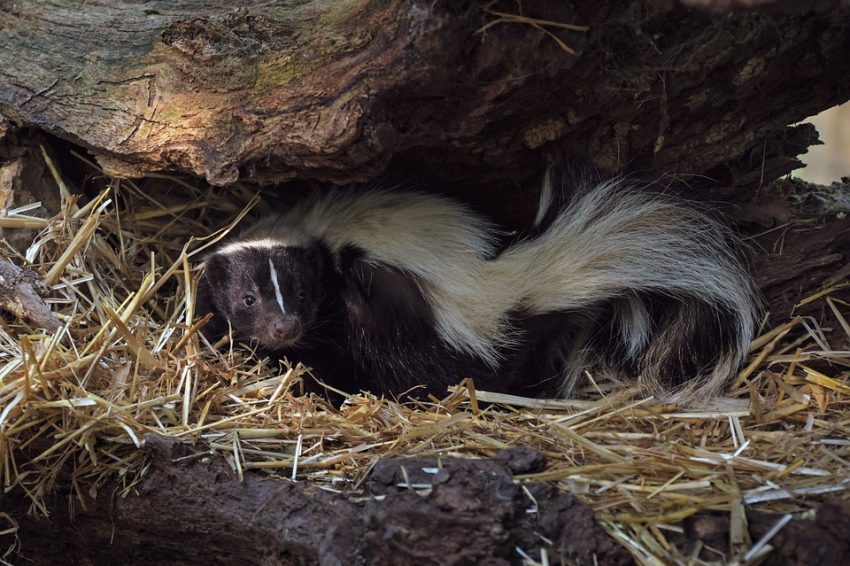If you suddenly meet a skunk face to face – stand still. If you don’t make any sudden movements, chances are good that the little black-and-white mammal will continue on its way and leave you alone. But if you jump about or shout, the skunk will take prompt defensive action.
First, the skunk may be polite enough to stamp its feet, telling you not to come any closer. If you advance anyway, it will raise its plumed tail as a clear warning signal. If you still advance, the skunk will whirl quickly as a flash and fire salvo after salvo of evil-smelling liquid in your direction. You’ll be sorry!
So, let’s learn further more about these little devils.
The Skunk’s Chemical Defense

Musk glands inside the skunk’s body store this powerful fluid until it is needed. Then strong muscles force it out through two small openings, one on each side of the base of the tail. Aiming accurately, the skunk cans hoot this clear, yellow fluid a distance of 12 or 15 feet. If it hits a victim in the face, he gasps and chokes for breath. He is temporarily blinded and his eyes sting like fire. Water will relieve the pain, but it won’t take away the powerful odor
The best treatment for clothes is to wash them in a pail of warm water to which a cup of household ammonia has been added. As for the victim himself, a series of hard scrubbings – and time – are needed to make him presentable again. A good scrubbing with tomato juice (followed by a bath) will help a dog that has been “skunked.”
Stripped Skunks Help Farmers

Excuse me, what? You mean these little devils can help??
Skunks are found only in the New World – North and South America. North America is the center of their living area, but the hog-nosed skunk also lives throughout much of South America. The most common North American species is the striped skunk.
The living area of the striped skunk reaches from southern Canada southward through most of the United States and into Mexico. About the size of a house cat, this skunk has shiny black fur with white markings. There is usually a thin white stripe down the nose, two broad white stripes down the back and quite a bit of white in the tail. This varies, however, and some individuals are almost entirely black.
Despite its disagreeable scent, the skunk is usually a mild and inoffensive animal. It never uses its weapon except to defend itself. And, the skunk helps farmers by eating great quantities of harmful insects and their grubs. It also eats rodents and other small animals as well as fruits, bulbs and eggs.
During cold winter months, skunks remain in their sleeping dens most of the time. During mild spells, however, they may be up and about in the nighttime. In February and March, the males hunt for mates. About 9 weeks after mating, the female skunk bears four to seven blind and almost naked young in her underground den. The youngsters grow rapidly. When they are about 6 weeks old, they begin to follow their mother on her nightly rambles.
Little Spotted Skunks

Besides the striped skunk, three other kinds of skunks live in North America. The smallest of these is the little spotted skunk, which ranges over much of the United States, Mexico and Central America. Seldom weighing more than 3 pounds, the little spotted skunk has a flashy pattern of white zigzag stripes and spots on a black background. If an enemy performs a warning handspring that shows the striking pattern on its back.

